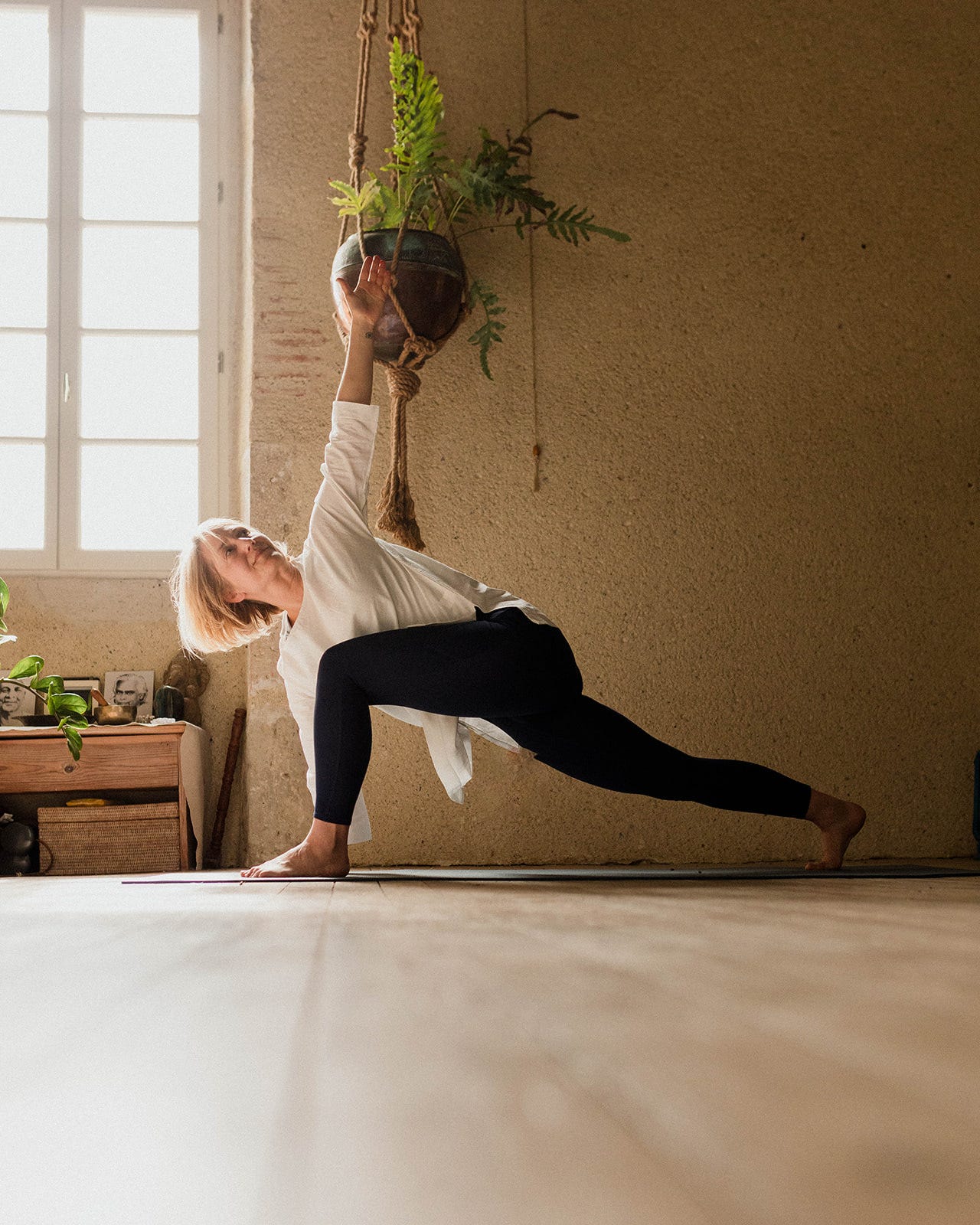Breaking the Cycle: How Conscious Breathing Calms an Overactive Mind
And details for the next 30 days of Yoga
Welcome to Unfolding Conversations, the newsletter of littlefrenchretreat.com and TamsinJardinier.com - for restorative practices, creative inspiration, and a mindful approach to life and work…
I have always been grateful for the advice given to me by Dr. Sarah Sampson, our family doctor, when, at twenty-three, I found myself desperate and in the throes of panic attacks. She simply suggested that I learn to breathe. At the time, it struck me as an odd response—I had never considered that I wasn’t breathing.
Yet little did I know that this shift—from automatic, shallow breathing to conscious breath—would be life-changing and the beginning of a lifelong love for the practice of yoga.
Breath is the invisible thread that weaves through every moment of our lives—a quiet force of energy, stability, and renewal. Yet we often overlook its power, trying to think our way through challenges rather than breathe our way through them. We become caught in the habits of the mind that seek control, external validation, or comfort in routine—even when those routines no longer serve us.
Without conscious breath, life can feel just out of reach, full of endless possibilities that pull us in different directions, creating stress and uncertainty, leaving us without a sense of safety. But when we return to the breath with awareness, we return to knowing—knowing what we need, what we are capable of, what nourishes us, and what does not.
Yoga, at its core, is this practice of return. Breath is the guide that shifts us from grasping to acceptance, from reactivity to steadiness, and its power is endless.
Three ways to Break the Cycle of Overwhelm:
From Overwhelm to Balance
The breath is a direct path to regulating the nervous system. When we feel reactive, fatigued, or overstimulated, breathwork (pranayama) helps restore balance. Key practices include:
Nadi Shodhana (Alternate Nostril Breathing) – Calms the mind by balancing brain hemispheres.
Bhramari (Humming Bee Breath) – Soothes the nervous system and quiets mental chatter.
With consistent practice, we realize we are not at the mercy of fleeting emotions. The breath becomes our anchor.
From Stuck to Focused Action
The solar plexus (Manipura Chakra) governs confidence, resilience, and personal power. When balanced, we feel purposeful and steady. Breath and movement activate this center:
Kapalabhati (Skull-Shining Breath) – Clears stagnation and awakens energy.
Ujjayi (Victorious Breath) – Creates focus and stability.
Yoga postures like Boat Pose, Twists, and Warrior Poses reinforce inner strength, grounding us in adaptability and ease.
From External Grasping to Inner Stability
The mind often seeks stability outside itself—through achievements, relationships, or validation. Breath teaches us another way, reminding us that every inhale is met with an exhale, every fullness followed by release.
Yoga philosophy offers guiding principles:
Ishvarapranidhana (Surrender) – Trusting life’s flow instead of forcing control.
Santosha (Contentment) – Finding peace in the present.
Vairagya (Non-Attachment) – Letting go of grasping, embracing freedom.
Through breath, we cultivate stability—not as rigidity, but as a steady rhythm within.
You're Invited: 30 Days of Yoga
Join me and our growing community for 30 days of live yoga beginning Monday, April 14th and experience daily breathwork and movement to cultivate clarity, strength, and renewal through consistent practice.
Let’s move, breathe, and support one another in our efforts—together.
Are you in?

Until next time,
Much love
Tamsin x



